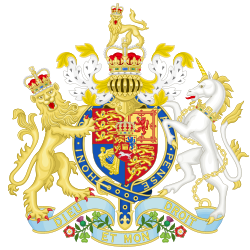| Citation | Short title | Description | Extent of repeal |
|---|
| 6 Geo. 1. c. 6 | Excessive Loading of Vehicles, London and Westminster Act 1719 | An Act passed in the Sixth Year of the Reign of King George the First, intituled An Act for preventing the Carriage of excessive Loads of Meal, Malt, Bricks, and Coals within Ten Miles of the Cities of London and Westminster. | As relates to the Carriage of Bricks, except so far as the same relates to the City of London. |
| 18 Geo. 2. c. 33 | Carts on Highways Act 1744 | An Act passed in the Eighteenth Year of the Reign of King George the Second, intituled An Act to repeal a Clause made in the Third Year of the Reign of King William and Queen Mary, relating to Carts used by Persons inhabiting within the Limits of the 'Weekly Bills of Mortality, and to allow such Carts to be drawn with Three Horses, and to prevent the Misbehaviour of the Drivers of Carts in Streets within the said Limits. | Except so far as the same relates to the City of London |
| 24 Geo. 2. c. 43 | Highways Act 1750 | An Act passed in the Twenty-fourth Year of the Reign of King George the Second, intituled An Act for the more effectual Preservation of the Turnpike Roads in that Part of Great Britain called England, and for the Disposition of Penalties given by Acts of Parliament relating to the Highways in that Part of Great Britain called England, and for enforcing the Recovery thereof; and for the more effectual preventing the Mischiefs occasioned by the Drivers riding upon Carts, Drays, Carrs, and Waggons in the City of London and within Ten Miles thereof, as relates to the preventing Mischief occasioned by the Drivers riding upon Carts, Drays, Carrs, and Waggons in the City of London or within Ten Miles thereof. | Except so far as the same relates to the City of London. |
| 30 Geo. 2. c. 22 | Traffic on Highways Act 1757 | An Act passed in the Thirtieth Year of the Reign of King George the Second, intituled An Act to explain and amend an Act made in the Eighteenth Year of His present Majesty's Reign, to prevent the Misbehaviour of the Drivers of Carts in the Streets in London, Westminster, and the Limits of the Weekly Bills of Mortality, and for other Purposes in this Act mentioned. | Except so far as the same relates to the City of London. |
| 13 Geo. 3. c. 78 | Highways Act 1773 | An Act passed in the Thirteenth Year of the Reign of King George the Third, intituled An Act to explain, amend, and reduce into One Act of Parliament the Statutes now in being for the Amendment and Preservation of the public Highways within that Part of Great Britain called England, and for other Purposes. | The whole act. |
| 34 Geo. 3. c. 64 | Highway Act 1794 | An Act passed in the Thirty-fourth Year of the Reign of King George the Third, intituled An Act for the more effectually repairing of such Parts of the Highways of this Kingdom as are to be repaired by Two Parishes | The whole act. |
| 34 Geo. 3. c. 74 | Highways (No. 2) Act 1794 | An Act passed in the same Thirty-fourth Year of the Reign of George the Third, intituled An Act for varying some of the Provisions in an Act of the Thirteenth Year of His present Majesty's Reign, respecting the public Highways within that Part of Great Britain called England, which relate to the Performance of Statute Duty. | The whole act. |
| 42 Geo. 3. c. 90 | Militia Act 1802 | An Act passed in the Forty-second Year of the Reign of King George the Third, intituled An Act for amending the Laws relating to the Militia in England, and for augmenting the Militia. | As relates to the Exemption of any Serjeant, Corporal, Drummer, or Private of the Militia from performing Highway Duty, commonly called Statute Duty. |
| 44 Geo. 3. c. 52 | Statute Duty Act 1804 | An Act passed in the Forty-fourth Year of the Reign of King George the Third, intituled An Act to alter and amend so much of an Act passed in the Thirty-fourth Year of His present Majesty as relates to the Amount of the Sums to be paid by Persons compounding for the Performance of Statute Duty. | The whole act. |
| 54 Geo. 3. c. 109 | Highways (England) Act 1814 | An Act passed in the Fifty-fourth Year of the Reign of King George the Third, intituled An Act to amend an Act of the Thirteenth Year of His present Majesty, to explain, amend, and reduce into One Act the Statutes now in force for the Amendment and Preservation of the public Highways within England, and for other Purposes. | The whole act. |
| 55 Geo. 3. c. 68 | Highways, etc. (England) Act 1815 | An Act passed in the Fifty-fifth Year of the Reign of King George the Third, intituled An Act to amend an Act of the Thirteenth Year of His present Majesty, for the Amendment and Preservation of the public Highways, in so far as the same relates to Notice of Appeal against turning or diverting a public Highway, and to extend the Provisions of the same Act to the stopping up of unnecessary Roads. | The whole act. |
